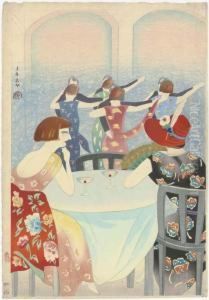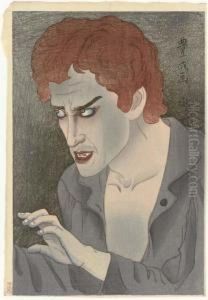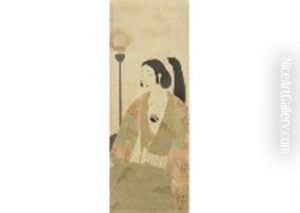Koka Yamamura Paintings
Koka Yamamura, also known as Yamamura Kōka, was a Japanese artist born on July 13, 1886, in Osaka, Japan. He is primarily known for his work in the realm of woodblock prints and his association with the Shin Hanga movement, which sought to revive traditional ukiyo-e art in a modern context during the early 20th century. Despite the common reference to the Shin Hanga movement, Koka maintained a distinct personal style that was often more in line with the earlier ukiyo-e aesthetics than that of his contemporaries.
Koka Yamamura began his artistic journey studying with Kaburagi Kiyokata, a prominent figure in the Tokyo art world, who was instrumental in nurturing the next generation of Japanese artists. Under Kiyokata’s guidance, Koka refined his skills and developed a keen eye for capturing the beauty and subtleties of the Japanese landscape and its people, often depicting subjects such as bijin (beautiful women) and actors from the kabuki theater, which were popular themes in ukiyo-e prints.
During the 1920s, Koka Yamamura produced a number of woodblock prints that achieved significant recognition. His work is characterized by a combination of delicate lines, careful attention to detail, and a vibrant use of color. Unlike many of his peers in the Shin Hanga movement, such as Ito Shinsui or Hashiguchi Goyo who often used a more romanticized and modern lens, Koka’s approach was somewhat more traditional, echoing the classic styles and techniques of Edo-period masters.
Despite his successes and contributions to the art world, Koka Yamamura's career was relatively short-lived. He passed away at the young age of 56 on April 1, 1942. His body of work, although limited, has been celebrated for its technical excellence and artistic beauty. Today, Koka's prints are highly sought after by collectors and are considered important pieces in the narrative of Japanese art history, bridging the gap between the age-old tradition of ukiyo-e and the evolving aesthetic of the 20th century.



